The outer stonework of the Cathedral building is predominantly sandstone, but due to the length of time it took to build the Cathedral, and the extended periods of repair and rebuild, a variety of types of sandstones have been utilised.
Worcester Cathedral Sandstones
Highly Sandstone
The majority of the original sandstone used to build the Cathedral dates from the Carboniferous Period (359.2 to 299 million years ago during the late Paleozoic Era.) One such stone comes from the Halesowen Formation. The stone is best known as Highley Sandstone. It was quarried in Highley, Shropshire, at Stanley Quarry which in medieval times was owned by Worcester Diocese and as a result formed an important source of stone for the early Cathedral. Generally greenish to buff, the stone is commonly micaceous and cross-bedded and marked out by the frequent occurrence of small nodules of iron which appear as dark spheres or irregular patches which tend to protrude from the surface. Orange goethite iron staining, particularly on joint surfaces is common. Although the thicker beds are hard at outcrop, it is a stone that weathers poorly and is constantly being replaced at the Cathedral by a much harder sandstone of similar colour, also of Carboniferous age, from the Forest of Dean.
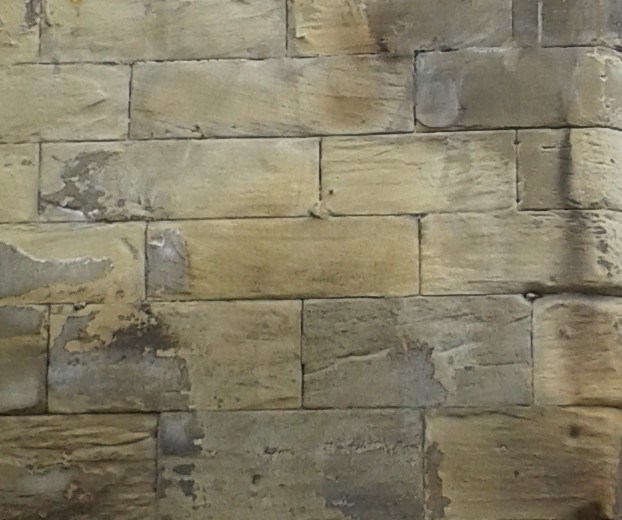
Example of green Highley Sandstone
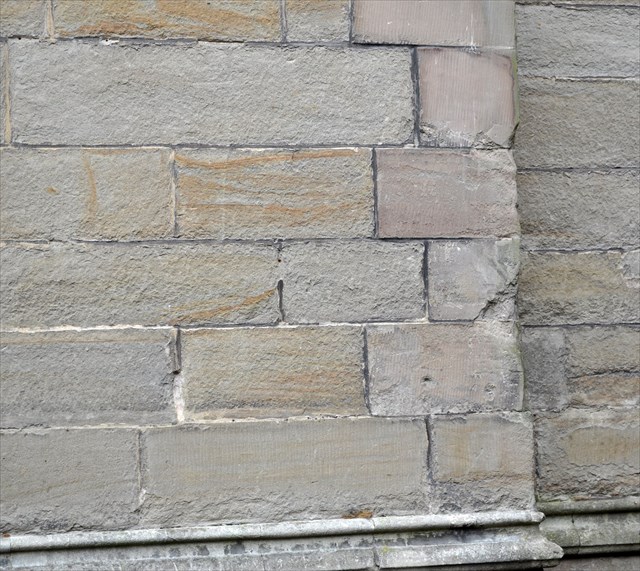
Highley Sandstone with orange goethtite iron staining
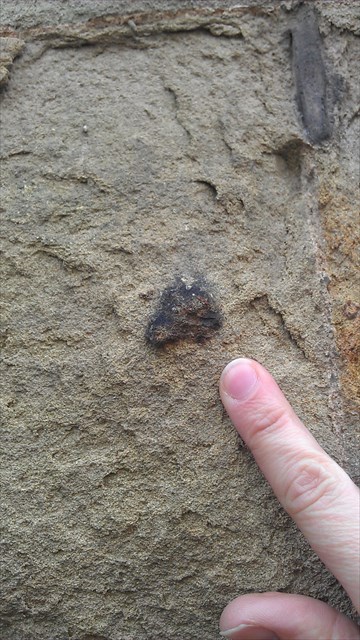
Example of iron nodule in Highley Sandstone
Alveley Stone
Another carboniferous sandstone, this time from the Salop Formation, is the Alveley Stone. In general this is a fine-grained well sorted sandstone with common cross-bedding. In colour it is crimson to dull brownish-red, chocolate, purple and lavender. For many centuries Hexton’s Quarry just north of Arley supplied red and grey sandstone to many locations along the River Severn, including to the Cathedral.
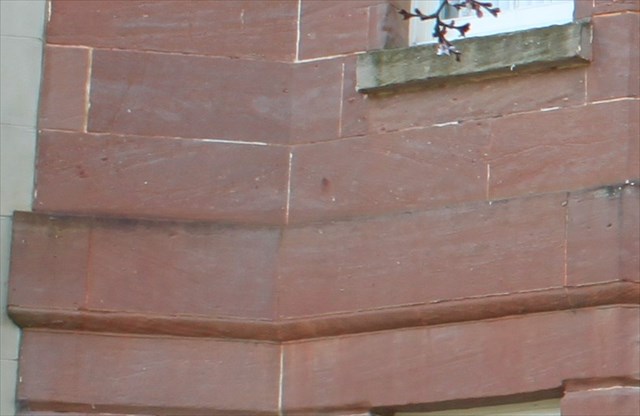
Example of Red Hexton Stone, aka Alveley Stone
Bromsgrove Sandstone (Ombersley Stone)
From the Triassic period (spanning 50.9 million years from the end of the Permian Period 252.17 million years ago, to the beginning of the Jurassic Period 201.3 million years ago), comes the Sherwood Sandstone Group, comprising of three formations. From this group, the Bromsgrove Formation is the most widely used for building purposes. Some of the best quality Bromsgrove Sandstone came from quarries not only in Bromsgrove but also in the Ombersley area where some beds provided pink, cream and a grey-white, hard building stone, put to great use in many parts of the county. It was quarried alongside the River Severn at Ombersley and was used in the construction of Stourport Canal Basin and is yet another stone used in Worcester Cathedral.
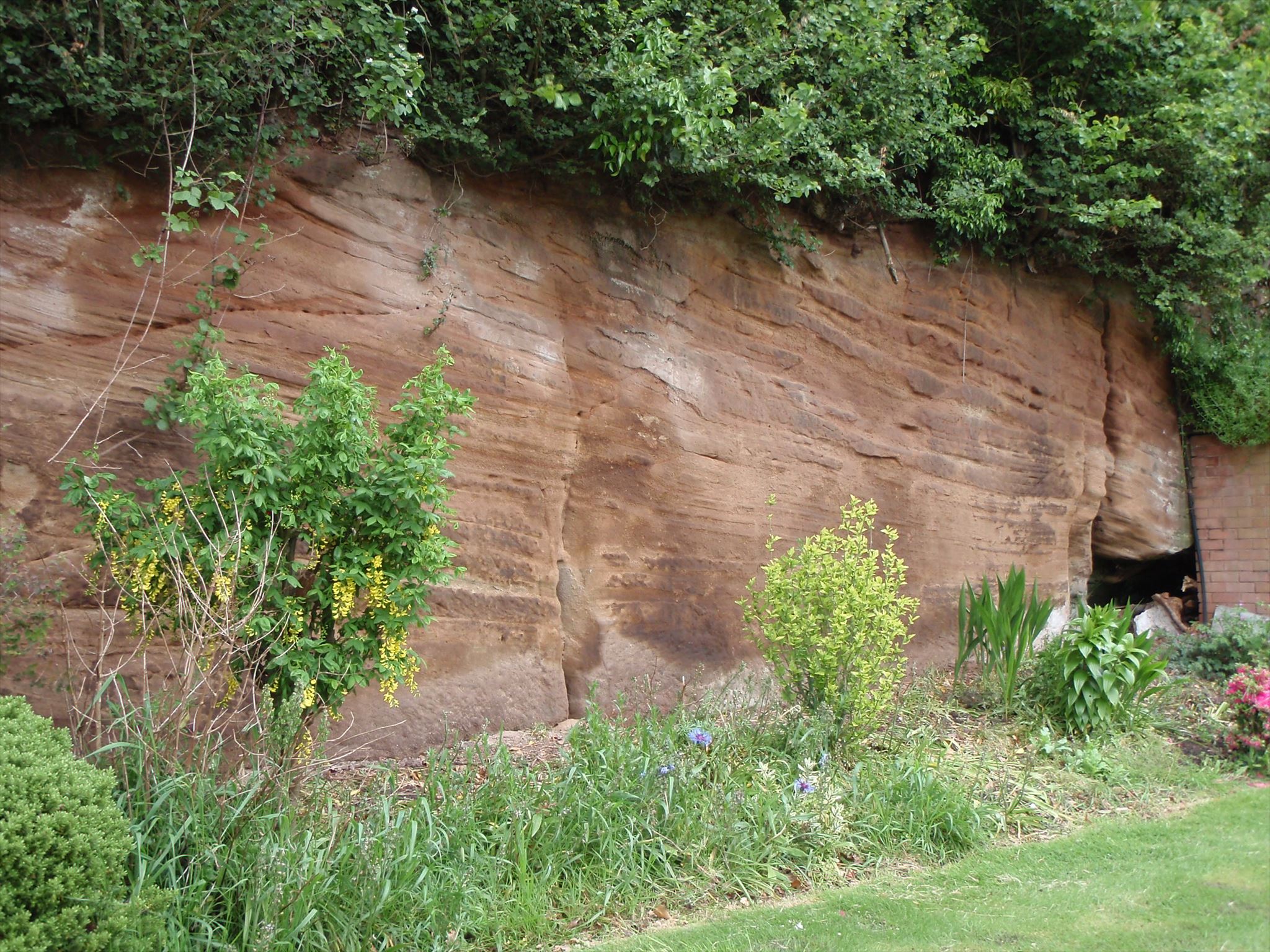
Old Quarry face for Bromsgrove Sandstone
Hollington Stone
One of the main replacement stones used in the conservation if the Cathedral is another that comes from the Triassic Period – the red and grey Hollington Stone. This is another stone from the Bromsgrove Formation. It is one of the main commercially available red sandstones and is commonly used for modern repairs and replacements on red sandstone buildings whose original sources are no longer available. In colour it is a brownish red, pale buff or mottled between the two and the rock is almost has diffuse laminae in variable colours. Compared to local Bromsgrove Sandstones it is of a far less bright red and there is often a conspicuous sparkle to the stone in sunlight due to a recrystallised quartz cement. It is recognisable by its characteristic buff mottling (if present) and the fine drapes of mud defining cross-bedding and lamination. Intraclasts of deep red mud are relatively common, as are small (<0.5cm) area of barytes cement which appear as white patches on the surface of the stone which stand proud when weathered.
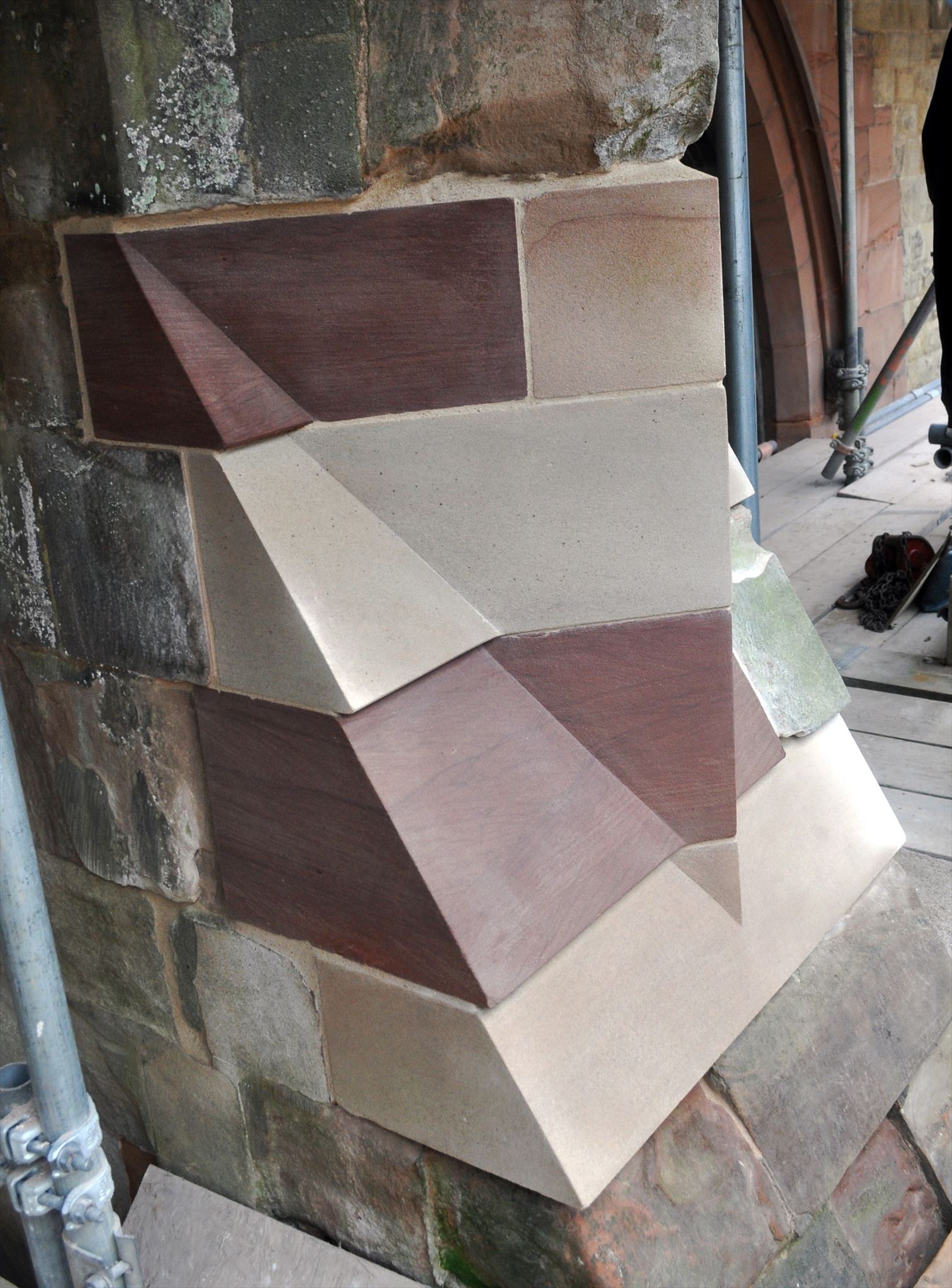
Buff and red variants of Hollington Stone replacing blocks in a buttress on the NW wall
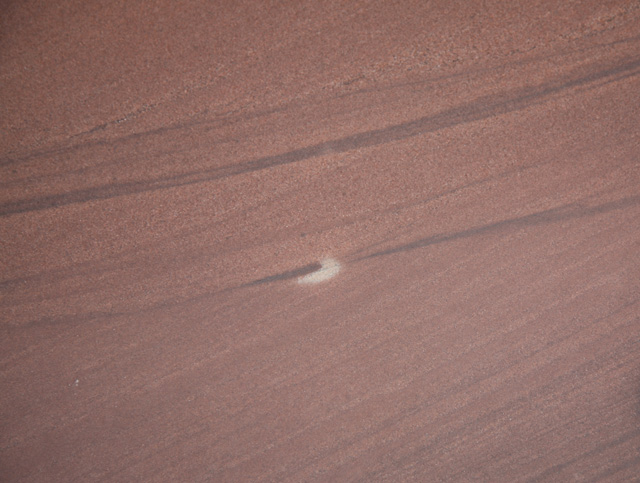
Example of cross bedding, intraclasts and barytes cement in Hollington Stone
Onto this EarthCache!
As this is an EarthCache there is no physical container to find. Instead answer the questions below and send them to me via email or message centre using the link on my user profile at the top of the page. You may post a found log without receiving a response from me. Any found logs without a corresponding email or message will be deleted and any with significant errors will be contacted for further checks.
- At Waypoint 1, facing south, you should be able to look up at the stone work of this wall and see a great deal of restoration. Several different replacement stones have been used here. Look at the stone immediately around the window. Is it original or replacement stone? Using the descriptions in the information above, which of the stones do you think it is most likely to be?
- At Waypoint 2, facing east, you should be looking at an example of Highley Sandstone. You will see some horizontal striation. Using the information above, what do you think this might be an example of?
- At Waypoint 3, facing east, you should see some examples of erosion, staining and damage, and see the resulting replacement stone. What processes do you think may have caused this erosion and damage?
- At Waypoint 4, with your back to the houses, you will again see an example of Highley Sandstone. Describe the texture of the stone. How would you describe the grain of the stone (size of grain). What specific features are very prominent here?
- At Waypoint 5, you should find a Worcester Cathedral information board. The stone is very different above the sign compared to below. How would you describe these differences?
- At Waypoint 6, to the right of the entrance to the Cathedral, you will see a juxtaposition of two very obviously different types of stone. Describe the differences between them and name the two stones that have been used.
- (Optional) Please upload a photograph with your log of yourself at the cathedral.
Please note that you do not need to enter the cathedral to answer the questions for this EarthCache, though it is highly recommended as it is a beautiful building both inside and out. If you do go into the Cathedral, and you would like to continue learning about the building stones of the Cathedral, I would recommend this guide, which is also available from the Cathedral shop.
For further information about the building stone of Herefordshire and Worcestershire, visit A Thousand Years of Building with Stone an extensive website run by the Herefordshire and Worcestershire Earth Heritage Trust. This website has provided much of the knowledge that I needed to create this EarthCache and I would like to acknowledge its input.
Thanks are also due to the Dean and Chapter of Worcester Cathedral for their permission and assistance with the creation of this EarthCache.